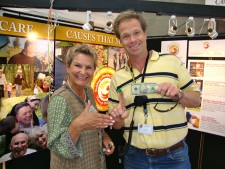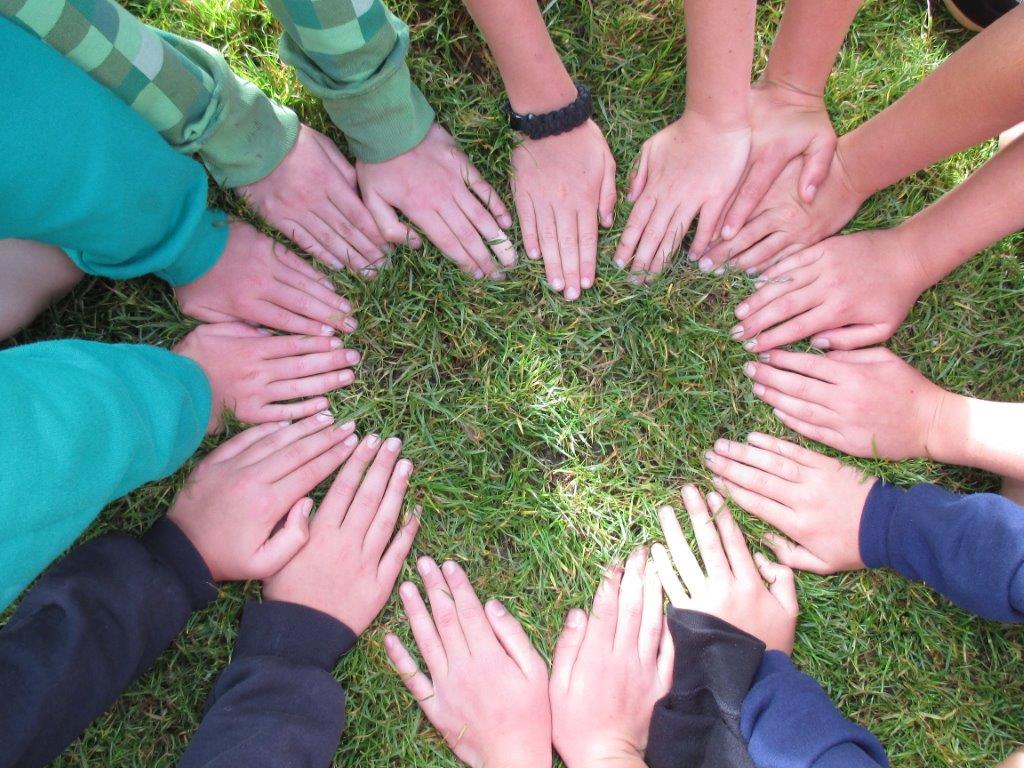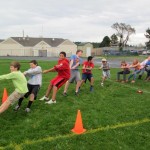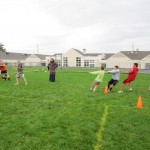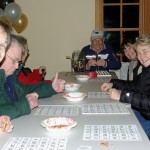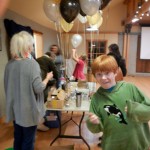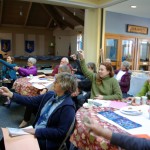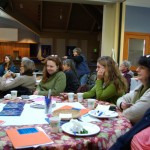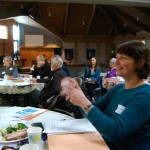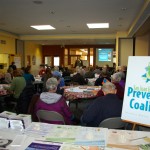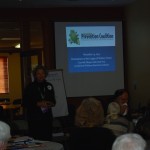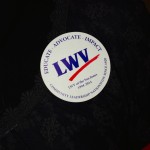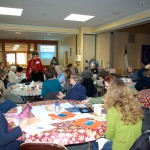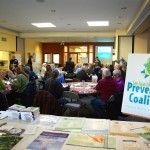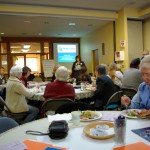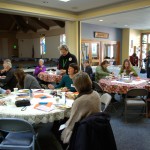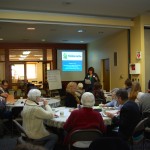Legal pot shops crippled by black market, medical marijuana
Colorado’s monthly marijuana usage is 72 % greater than U.S. total…The Marijuana Report Dec. 31, 2014
 Colorado’s monthly marijuana use is 72 percent greater than the U.S. total among people aged 12 and older according to the National Survey on Drug Use and Health, released last week by the U.S. Substance Abuse and Mental Health Services Administration. Past-month use in Colorado increased 22 percent from 10.41 percent to 12.7 percent between 2012 and 2013, one year after the state legalized recreational marijuana in November 2012 but one year before recreational pot shops opened for business in January 2014. Colorado legalized medical marijuana in 2000 when 7.8 percent of its citizens used the drug monthly compared to 12.7 percent thirteen years later. The legislature authorized commercial marijuana growing and sales through dispensaries in 2009. Three years later, more than 500 dispensaries were operating across the state and more than 108,000 residents held medical marijuana cards. Past-month alcohol and pain-reliever use also increased in Colorado in 2013.
Colorado’s monthly marijuana use is 72 percent greater than the U.S. total among people aged 12 and older according to the National Survey on Drug Use and Health, released last week by the U.S. Substance Abuse and Mental Health Services Administration. Past-month use in Colorado increased 22 percent from 10.41 percent to 12.7 percent between 2012 and 2013, one year after the state legalized recreational marijuana in November 2012 but one year before recreational pot shops opened for business in January 2014. Colorado legalized medical marijuana in 2000 when 7.8 percent of its citizens used the drug monthly compared to 12.7 percent thirteen years later. The legislature authorized commercial marijuana growing and sales through dispensaries in 2009. Three years later, more than 500 dispensaries were operating across the state and more than 108,000 residents held medical marijuana cards. Past-month alcohol and pain-reliever use also increased in Colorado in 2013.

E-Highlights features important news coverage posted to The Marijuana Report.Org each week. It is sponsored by National Families in Action, Project SAM (Smart Approaches to Marijuana), and the Treatment Research Institute. Check The Marijuana Report.Org often to keep up with daily marijuana news. Subscribe to E-Highlights for weekly overviews.
|
|||||||||||||||||
|
Community Prevention & Wellness Initiative (CWPI) Survey for San Juan Island Community
 This survey is not created locally, it is offered through the State, a Division of Behavioral Health, which maintains a high level of security, keeping this an anonymous survey. The SJI Prevention Coalition offers the survey for our community. Also known as, The Community Prevention and Wellness initiative (CPWI) Survey. We will extend the survey through December 31st, 2014 and get the results in late January 2015.
This survey is not created locally, it is offered through the State, a Division of Behavioral Health, which maintains a high level of security, keeping this an anonymous survey. The SJI Prevention Coalition offers the survey for our community. Also known as, The Community Prevention and Wellness initiative (CPWI) Survey. We will extend the survey through December 31st, 2014 and get the results in late January 2015.
Everyone’s voice is important. Thank you for sharing this information. We hope people will take the few minutes to answer honestly. The data will help our community to address substance abuse issues among youth and help to get a sense of what our community’s perceptions are on these issues.
https://www.surveymonkey.com/s/SAJUXON
Also, please circulate this within your circle of influence, and add your personal invitation to parents, guardians, and community members. Our goal is to have a good cross-section of opinions that reflects the demographics of San Juan Island. Last year, we had over 300 survey participants. (We are currently at 120, as of 12/11/14, we need your voice added, please help us reach our goal of 300 by taking and sharing the survey!)
As needed, SJIPC will be distributing hard copies to those of you who would like paper and pencil documents. The survey is also available in Spanish. As always, thanks for your continued support!
Red Ribbon Week at Friday Harbor Middle School 2014
Here are a few photos from our Prevention Intervention Specialist, Meagan Gable, at FHMS. Student engaged in activities to help promote healthy choices and why they should be Drug-Free… A “Natural High” Field Day, making a Pledge/Banner & Signing it, Slam Dunk, Drugs are Junk: Basketball Shooting Competition, were just some of the activities they did this year… Ask your kids more about it!
New Year’s Eve Community Celebration at Brickworks!
Ready to say goodbye to this year and welcome the New Year? Enjoy a family-friendly, non alcoholic celebration, with your friends and family at Brickworks. This Island Rec coordinated event, sponsored by the San Juan Island Prevention Coalition, offers a safe and fun environment for all ages to bring in the New Year.
Games, music, crafts and food are part of the event. Please bring a snack to share, too! If you want to volunteer, call Island Rec at 378-4953. Decorating pre-party is helpful, too. Here are a few photos from last year…
2014 NATIONAL RED RIBBON PHOTO CONTEST WINNERS
Thank you to everyone who participated in the 2014 National Red Ribbon Photo Contest. We received hundreds of entries and over 188,000 votes in support of your entries. The purpose of the contest was to involve families and schools in spreading the Red Ribbon Week message. Based on the stories we’ve heard about families, schools and communities working together to promote healthy, drug free kids, we know it was a huge success.
WE ARE DELIGHTED TO ANNOUNCE THE TEN WINNERS FROM AROUND THE COUNTRY WHO RECEIVED THE MOST VOTES IN EACH REGION/CATEGORY. CONGRATULATIONS TO OUR WINNERS.
SCHOOL DECORATION WINNER
 “This contest brought even more awareness to Red Ribbon Week and it lasted for a longer period of time. If it can prevent one person from using drugs and alcohol and make a positive impact on their life, then it was all worth it. Everyone took part in the contest. It was truly a team effort. We live in a wonderful community.”
“This contest brought even more awareness to Red Ribbon Week and it lasted for a longer period of time. If it can prevent one person from using drugs and alcohol and make a positive impact on their life, then it was all worth it. Everyone took part in the contest. It was truly a team effort. We live in a wonderful community.”
Amy Randle, Teacher
“I’ve been a principal for seven years and a big part of the job is concern for my students’ health and well-being. We must encourage our students to make good decisions daily. That’s why we invest so much in prevention efforts. We are thrilled to be able to use the $1,000 prize to continue to promote this important message.”
Dean Eckert, Principal
HOME DECORATION WINNERS
 “Red Ribbon Week is important to me because the more you talk to your children and the more involved they are with positive projects like this, the less likely they are to venture out into the world of trial and error. My hope is to fill my kids with so much knowledge on the effects of drugs that they can be positive role models for their friends and make smart choices as they get older.”
“Red Ribbon Week is important to me because the more you talk to your children and the more involved they are with positive projects like this, the less likely they are to venture out into the world of trial and error. My hope is to fill my kids with so much knowledge on the effects of drugs that they can be positive role models for their friends and make smart choices as they get older.”
Denise Roberts, Mother
“What I liked most about the contest was seeing students take initiative for their own well-being and the well-being of others. Red Ribbon Week is a wonderful focal point for discussion and education. The more education we give students at a younger age, the more time they have to develop an awareness and knowledge.”
Nancy Angelini, Principal
 “‘Love Yourself. Be Drug Free.’ means respecting and loving yourself enough to not get into a life that involves using drugs. I love Red Ribbon Week because it’s an opportunity for our whole school district to get together and present a unified message in a positive way.”
“‘Love Yourself. Be Drug Free.’ means respecting and loving yourself enough to not get into a life that involves using drugs. I love Red Ribbon Week because it’s an opportunity for our whole school district to get together and present a unified message in a positive way.”
Taylor Mosher, Student, 17 years old
“What I liked most about the Red Ribbon Photo Contest is that it not only brought awareness to our students but to the community. Drug awareness is an important weapon in the fight against addiction. Red Ribbon Week is so essential because it allows the community to participate in activities that promote healthy living for our youth and community.”
Dr. Larry Washington, Principal
 “While decorating our door together, I had the opportunity to talk to my kids about a serious topic in a relaxed, casual setting, in a non-confrontational way. We discussed school dances and other topics, as well as what to do if anyone offers them drugs or alcohol. My children are older so they’ll be faced with these difficult decisions soon. I want them to be educated and prepared.”
“While decorating our door together, I had the opportunity to talk to my kids about a serious topic in a relaxed, casual setting, in a non-confrontational way. We discussed school dances and other topics, as well as what to do if anyone offers them drugs or alcohol. My children are older so they’ll be faced with these difficult decisions soon. I want them to be educated and prepared.”
Kerri Kubasky, Mother
“In today’s society, children are exposed to so much more than we were growing up. The pressure from their peers is much stronger. Here in Western Pennsylvania, we have a big Heroin problem. We’ve been seeing lots of overdoses. To win this contest and use the money for prevention programs for our kids will be very beneficial.”
Lance Benteler, Principal
 “I truly believe that the Red Ribbon Week Campaign is very important. It amazes me what children, even kindergarteners, already know about drugs. It is a scary world out there and anything we, as adults, parents and teachers can do to keep our children from using alcohol and drugs is worth the effort. For us, it’s really a year-round effort, not just one week.”
“I truly believe that the Red Ribbon Week Campaign is very important. It amazes me what children, even kindergarteners, already know about drugs. It is a scary world out there and anything we, as adults, parents and teachers can do to keep our children from using alcohol and drugs is worth the effort. For us, it’s really a year-round effort, not just one week.”
Jennifer “Nurse JJ” Paquin, Mother and School Nurse
“Part of our job in educating students is educating them to understand the importance of staying drug free so they can be successful citizens. If we don’t, who will? It’s the responsibility of every individual in a child’s life. The $1,000 prize for our school will help us do even more to educate the students and we are really excited about that.”
Robyn Caldwell, Principal
 “Red Ribbon Week and this contest are great opportunities to educate our children and raise awareness about the importance of being healthy and drug free. The best part of this competition is always bringing families together at St. Eugene School to spread an important message to our children about drug prevention.”
“Red Ribbon Week and this contest are great opportunities to educate our children and raise awareness about the importance of being healthy and drug free. The best part of this competition is always bringing families together at St. Eugene School to spread an important message to our children about drug prevention.”
Diane Fergus, Mother
“Children are under much more pressure now than they used to be. The use of drugs can become an escape unless they are given opportunities to channel their energy and time elsewhere. Red Ribbon Week allows our school to truly concentrate on educating the students. We work as a community to engage them in thinking of other options than using drugs. We use peer pressure in a positive way.”
Jane Kusinski, Assistant Principal
 “I just loved seeing Kendall’s joy and excitement during the competition. To spread the word about our entry, Kendall shared information with her teacher, who shared with principal, who sent a newsletter to the whole school. They really rallied behind her. It also made an impact on the neighbors, who adored the idea of the contest and the decorations – and supported us by voting.”
“I just loved seeing Kendall’s joy and excitement during the competition. To spread the word about our entry, Kendall shared information with her teacher, who shared with principal, who sent a newsletter to the whole school. They really rallied behind her. It also made an impact on the neighbors, who adored the idea of the contest and the decorations – and supported us by voting.”
Kristin Remerow, Mother
“All the promise that children have – if we just encourage that and mold that early on then they can be great leaders. This contest is a venue and a way for them to express themselves and share a positive message. Kids learn messages best in their peer group, so when peers talk about making good choices, it rubs off on one another.”
Mary Jane Smith, Principal
 “I was so surprised to learn we won again. We participated in the contest last year as a way to have family time. It’s now evolved into our wonderful town rallying behind us in support of this drug-free message. The contest has also helped me discuss this topic with my kids.”
“I was so surprised to learn we won again. We participated in the contest last year as a way to have family time. It’s now evolved into our wonderful town rallying behind us in support of this drug-free message. The contest has also helped me discuss this topic with my kids.”
Megan Clark, Mother
“These children are our future and we want them to be prepared for anything they face. Red Ribbon Week brings awareness to the community by focusing on being drug free and making good choices. We’re very proud of our school and the family members within our community who worked together to make this happen.”
Deanna Hutchings, Principal
 “The contest really gave us an optimal time to talk about drugs to our kids. Since they were hearing about it at school and then decorating our home, it just made sense to have that conversation. The contest also helped us spread a positive message in our community and beyond. A lot of people from neighboring towns drive past our house on the way to work and they loved the message.”
“The contest really gave us an optimal time to talk about drugs to our kids. Since they were hearing about it at school and then decorating our home, it just made sense to have that conversation. The contest also helped us spread a positive message in our community and beyond. A lot of people from neighboring towns drive past our house on the way to work and they loved the message.”
Staci Larson, Mother
“Red Ribbon Week helps our teachers segue into discussions about drugs at school. We can bring this up in the best way to combat the dangers of substance abuse. This contest was great for our community and school. It opened the doors for a lot of positive conversations and dialogue.”
Patrick Beeman, Principal
 “This contest helped me talk to my children about drugs. My son and daughter are young, they didn’t know about drugs but this opened the door for a friendly conversation. It was also good to spread the word about the topic during Halloween because more people paid attention to it. Neighbors asked us about our decorations and we talked to them about it.”
“This contest helped me talk to my children about drugs. My son and daughter are young, they didn’t know about drugs but this opened the door for a friendly conversation. It was also good to spread the word about the topic during Halloween because more people paid attention to it. Neighbors asked us about our decorations and we talked to them about it.”
Shereen Elyas, Mother
“I think Red Ribbon Week and this contest are so important because drugs have become not only a concern among individuals, but a concern in our community and country. One of the ways to keep our students drug free is to help them understand the ramifications of making poor choices. Drugs destroy lives and take away opportunities.”
Dr. Isel Taylor, Principal
 “Talking about drugs with your children can be a difficult conversation. Having Red Ribbon Week put these lessons in the context of a competition helped open that door and helped the children be engaged, interested and invested in the conversation. But, the contest also helped spread the message beyond our family. During Halloween, we had our entry on the door and as Trick-or-Treaters came to the door, I could hear them reading the message aloud and talking about what it meant.”
“Talking about drugs with your children can be a difficult conversation. Having Red Ribbon Week put these lessons in the context of a competition helped open that door and helped the children be engaged, interested and invested in the conversation. But, the contest also helped spread the message beyond our family. During Halloween, we had our entry on the door and as Trick-or-Treaters came to the door, I could hear them reading the message aloud and talking about what it meant.”
Alison Benninger, Mother
“I loved that the contest opened up dialogue among our students about drug awareness and being drug free. I especially enjoyed that the theme of the contest, ‘Love Yourself. Be Drug Free,’ emphasized the value of self- worth. We are so very proud of Jack and his dedication and creativity!”
Kathy Hart, Principal
Help Protect our Youth from Marijuana, Comment Period on Rules Open until 10am Dec. 3, 2014
|
Comments Needed on LCB Marijuana Rule Revisions to Help Protect Youth
WASAVP reminds the substance abuse prevention community that the Liquor Control Board comment period on proposed revisions to marijuana rules ends tomorrow, December 3, and email comments to rules@liq.wa.gov are critical (today!).
It is important to help communities across the state have a voice in the continuing evolution of the rules that govern the recreational marijuana industry. No doubt, the marijuana industry is working to expand the market without a trained eye on preventing harm to kids and communities. The LCB needs our perspective!
We can offer this by supporting coalition members, community advocates and concerned parents to comment individually on these rules and share this Action Alert via their social media networks.
Advocates have already had some success as many rule revisions being considered will help protect kids. See below for some easy advocacy steps and details on the full slate of revisions being considered. Some highlights include:
*Note: increased grow canopy is intended, in part, to get 502 stores additional product to help capture some of the illicit and medical market that likely dominates both the in- and out- of state supply chain. Without the medical marijuana system under control, and while it continues to capture the majority of the recreational MJ market, we are concerned that expanding state licensed grow capacity might only serve to further flood the market and decrease price–both of which can increase youth access. To consider is that 8.5 Million sq. ft. of canopy at 40 grams per square foot per harvest will supply about 850,000 daily marijuana users–many more than exist in WA State. Experts have predicted a majority of WA MJ will be illegally exported. Will expanding the grow canopy just support illegal export? Or, is the export business primarily served by the cheaper medical market, illegal dispensaries, and illicit cartels? Is it even possible to influence the recreational market with policy modifications when the medical market is unregulated and overwhelmingly serving recreation demand? This is a complex issue that prevention professionals should consider carefully in terms of local and statewide impact.
|
|
Take Action 1. See proposed rule modifications on the LCB page here.(CR102, 14-31) and develop comments (or use bullets above with “support” or “oppose”).
2. Email comments to the rules coordinator before 9:00am, December 3: rules@liq.wa.gov Note: comments from as many individuals as possible is best.
3. Consider testifying in person at the December 3, 10:00am board meeting at the LCB offices near Olympia. (agenda)
Thank you for your advocacy during these historic and critical times for the substance abuse prevention field!!!
|
Board of Trustees Meeting Co-Sponsored by the League of Women Voters November 2014
We had a fabulous collection of voices at our recent November Board of Trustees Meeting which was Co-Sponsored by the League of Women Voters.
The meeting was an opportunity to come together and talk about local issues affecting our community, underage substance use, being high on this list for both organizations. Our Chair, Brad Fincher, Coordinator, Cynthia Stark-Wickman, Vice Chair, Court Bell and Recording Secretary, Boyd Pratt shared some of the data from the Healthy Youth Survey completed from 2006-2012. Meagan Gable, our new Prevention Intervention Specialist working at the FHMS/FHHS also spoke to the way we can help support our local youth and encourage healthy choices. As well as some of the programs we have going on in the schools.
We also used the Audience Response System to poll those attending the meeting (anonymously) on various questions about substance use and the “perceived” behaviors of youth and adults in our community. It’s immediate feedback on how people are thinking and offers a great starting point for the much needed conversations to help create positive change.
Interested in hearing more? We have the privilege to air this meeting on San Juan Access Channel 19 at 9pm, in Friday Harbor, for the immediate future. Here are some photos from the meeting, too.
In their own words…Articles from our Youth
Recently, we had an amazing experience at Camp Orkila. The first San Juan Youth Leadership Conference happened, bringing youth from Lopez, San Juan and Orcas Islands. Here are two accounts from our local youth on how the weekend unfolded:) Enjoy!
Camp Orkila was an amazing experience, and I will always remember it. Before the leadership conference, my friends would talk about it all the time, and I would always listen intently at the stories of mud pits and giant swings, wondering what it was like. When I got invited to come, I was so excited, I spent the rest of the day pondering about how the trip would be.
On the way there, somewhere along the ride we picked up Orcas in a big, bulky, Camp Orkila bus. It was an old bus, with clear signs of paint chipping. There were silver rungs above our heads, making me tempted to swing on them, though we probably weren’t suppose to. I enjoyed swinging on them anyways. Orcas and Friday Harbor didn’t mind any attention to each other. It was long, quiet and awkward. When we got to camp, we were greeted by Anika, Steve, and Jenny, the three Orkila counselors. There were small whispers rippling around the room, but it was only conversations between our own islands. Lopez hadn’t arrived yet, so there were a lot of empty chairs.
Eventually Lopez came, but by then I felt like there was a thick, long line splitting us into three groups of civilization. There was Lopez, Friday Harbor, and Orcas. Three separate islands that seemed like strangers to each other. We were separated into three cabins, one for each island. The tension was so thick I felt like I could cut it with a butter knife.
However, Camp Orkila had us play games that made us all interact with each other. We started to make small conversations, and we made a few acquaintances here and there. It wasn’t much, but it was better than nothing. Some people already knew each other to begin with, which probably made the transition easier. We played games that taught us to ask for help when we needed it, to lean on each other, and to work together as a team. We learned how to be leaders, but how to also to follow. In the world of Camp Orkila, nothing was ridiculous. Nothing was boring.
By the second day, I felt more comfortable with everyone. At night, we watched a movie (lots of ranting involved) and played games, and ate marshmallows around the campfire. Everyone split off between the groups of activities, wandering around from section to section. I fell asleep thinking that maybe we weren’t as different as I thought we were. Except the fire alarm went off three more times. Someone suggested, “We should, like, totally invade Orcas and be like ‘hey there’,” but we didn’t think they would really appreciate that.
It turned out one of our fire alarms were broken, which lead a chain reaction to the rest of them, creating a harmonic symphony of an ear-piercing, high pitched cacophony. One of my friends came over from another cabin and offered, “Jump into my arms! I’ll definitely catch you!”, but I wasn’t so sure I would survive the jump.
The last day was the best day. Yet it was the worst day. The giant swing was our last stop at Camp Orkila. I was totally pumped up. We geared up with our lovely blue bouffants (stylish) and suspenders that gave you wedgies, and split into two groups for the two swings. The swings were high up in the air, with a ‘Y’ shape to keep you from crashing sideways into the trees. You could decide whether to go all the way up or choose to go lower. I decided that I would go all the way up in a split-second decision and chose to go second. Everybody else in line would pull you up with rope, and you had to pull a purple string to let yourself go.
Going up was easy, but letting go was hard. I know that if I didn’t make a snap-decision, I would never have been able to pull the rope. So I pulled it (without thinking), and my stomach flipped and I was falling faster than I had ever fallen before. I swung in a huge ark, my voice falling in and out with the velocity I was speeding at. It was extremely nerve wracking, but I have no regrets. When I got off and it was my turn to join in with the pulling, I laughed and talked with my group the whole time. We got sidetracked a little, sometimes forgetting to pull the rope, but it was fun getting to know everybody. The worst part, though, was leaving. I had just experienced a taste of Camp Orkila, and I wanted to eat the whole cake. But I didn’t have that luxury. I left my email to my newfound friends and left for good. I realized it isn’t about Orcas, Lopez, or Friday Harbor. It’s about the San Juan Islands, the amazing community we are. We can choose to think of ourselves as separate. But I like it better when we’re one of the same, three parts of the same whole. I will never forget Camp Orkila, or the marks that it left on my heart.
Aida Must, 7th grader from Friday Harbor
Another youth shares his experience, too….
Did you hear over 40 local youth from San Juan, Lopez and Orcas Islands commenced at Camp Orkila for the FIRST San Juan Youth Leadership Conference? I should know, I was there! Meeting, mingling, and movement got us to know each other quickly. Team-building games, skills and discussions were part of this experience. I also got an opportunity to share some of the Strategic Prevention Framework I learned this summer at a National Conference. We looked at Environmental Strategies and how we can effectively be a change agent for our communities. Each and every participant enjoyed, appreciated and rejoiced in this full weekend of learning, bonding and sharing. It really was special.
Without the support of the San Juan Island Prevention Coalition, Camp Orkila, and the other Prevention Groups and Clubs from Lopez and Orcas, this educational and highly impactful experience wouldn’t have happened. I say Thank you! And, sharing it with teens from Lopez and Orcas made it that much more fun and effective. We talked about ways to keep coming together to share ideas and work together on projects for our communities.
I learned that people are born with leadership styles and they can change through the years. Are you a Lion, a Monkey, an Owl or a Koala? And, we should try to honor each person’s strengths and weaknesses.
Thank you to Rick Hughes for giving an informative talk on what he does as a County Councilman and offering his support to us.
We rode a very tall swing built in the tree tops! Our teammates pulled us up by a long red rope. The thrill of soaring through the trees was exhilarating! Natural highs for this guy. We also enjoyed a rope course, where we needed the help of others to be successful. And, we also did a trust walk were we were blindfolded and walked in a conga line through the forest only navigated by the sound of a teammate’s voice, who wasn’t blindfold. We were pushed to our “challenge zone” at times and it felt good to achieve new levels of confidence when doing so. But it was also okay to check oneself and step down, if needed. This was about knowing yourself and peer pressure never came into this. In fact, I recall only words of encouragement being shouted. We left our mark by planting Daffodil bulbs for next spring as a service project for the camp. Overall, it was a super fun trip and looking forward to using the new skills I gained.
Zach Fincher, 9th grader, Friday Harbor
Election Results from FLA. NO on Amendment 2
Florida’s Marijuana Legalization Fails In The 2014 Election Results, Amendment 2 Supporters Vow To Try Again

In a related report by the Inquisitr, the race to legalize medical marijuana in Florida was quite a close one. The requirement for Amendment 2 to pass was 60 percent but only around 57.5 percent of voters believe weed should be used for the sick and the disabled. But already, Washington D.C. is assumed to be a shoe-in and the polls for Oregon and Alaska are still calculating their numbers.
[UPDATE: The election results for Oregon's Measure 91 have come in. Alaska's recreational marijuana legalization results have just started pouring in.]
During the summer, the fight for Florida’s marijuana amendment also seemed like it was a shoe-in. Polls showed that around 88 percent of Floridians supported the idea, but then $6.5 millions dollars came in from Vegas casino tycoon Sheldon Adelsen to buy negative campaign ads. The “No On 2″ political ads had a leaked party video showing the primary backer of medical marijuana, millionaire personal injury attorney John Morgan, shouting profanities during a drunk party full of campaign staffers.
Florida’s marijuana legalization effort began to face more scrutiny and opponents attacked the language that would allow doctors to prescribe marijuana for any major medical condition. Some opponents even claimed that the amendment would allow minors to get hold of marijuana through loopholes. The negative campaign ads had the effect of dropping polls to an average of 57.3 percent — even before the early 2014 elections results even began streaming in.
But John Morgan is already vowing to try again during the 2016 elections. His Morgan and Morgan law firm spent $5 million campaigning for Amendment 2, but he believes that older voters were the reason that Florida’s marijuana legalization effort failed in the 2014 election. Younger voters are more likely to vote in favor of marijuana, and the voter turn out is typically higher during presidential elections like the 2016 election.
“That’s why this turnout is so key. If the young people turn out and vote, we win. If they don’t, we could potentially lose,” Morgan said, according to WFTV. “Millions of dollars have been floated into this state for the purpose of defeating medical marijuana, but Florida is not for sale.”
John Morgan believes so strongly about the issue because it’s personal for his family. Morgan’s brother uses chocolate-infused marijuana twice a day to deal with spasms and the pain of paralysis. But if it helps Florida’s marijuana legalization effort, Morgan says he’s willing to change the wording of a future attempt in order to get it passed into law.
Read more at http://www.inquisitr.com/1586470/floridas-marijuana-legalization-fails-in-the-2014-election-results-amendment-2-supporters-vow-to-try-again/#XBLJuZYOZKB486zT.99



